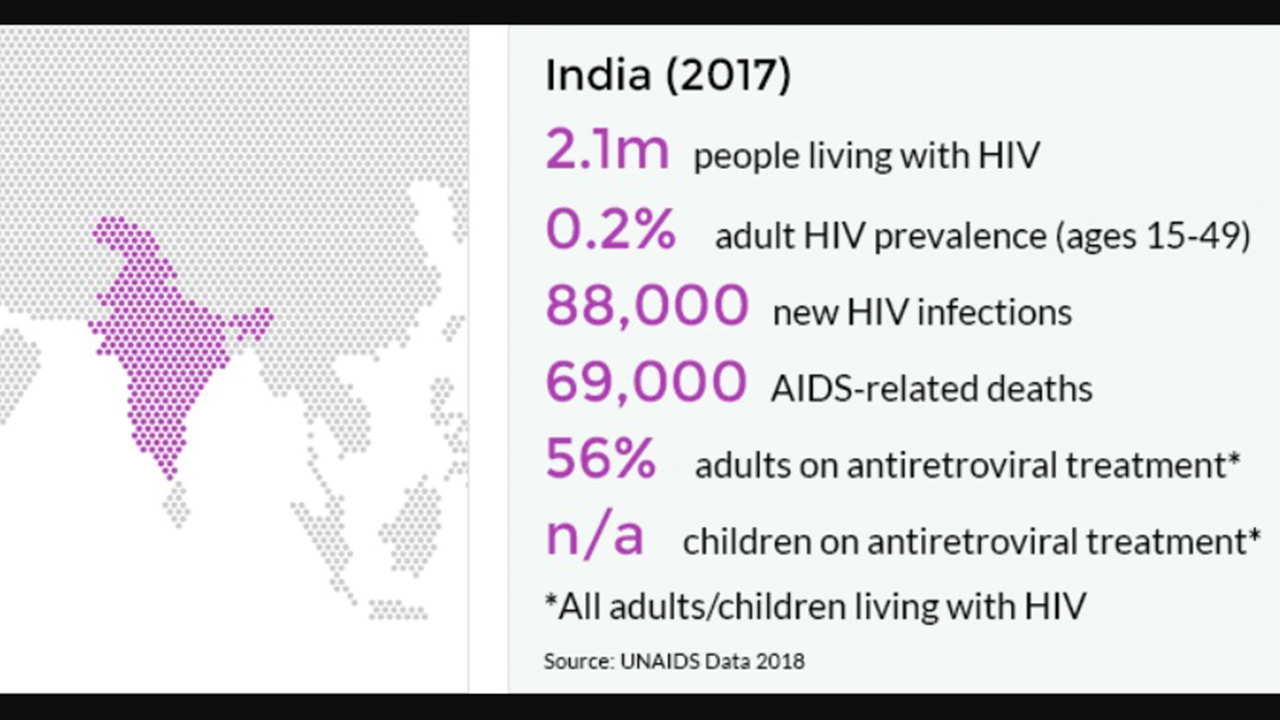India has the third largest HIV epidemic in the world. In 2017, HIV prevalence among adults (aged 15-49) was an estimated 0.2%. This figure is small compared to most other middle-income countries but because of India's huge population (1.3 billion people) this equates to 2.1 million people living with HIV.
Overall, India’s HIV epidemic is slowing down. Between 2010 and 2017 new infections declined by 27% and AIDS-related deaths more than halved, falling by 56%. However, in 2017, new infections increased to 88,000 from 80,000 and AIDS-related deaths increased to 69,000 from 62,000. UNAIDS (2017)
In 2017, 79% of people living with HIV were aware of their status, of whom 56% were on antiretroviral treatment (ART). The proportion of people on ART who are virally suppressed is not reported.
The HIV epidemic in India is driven by sexual transmission, which accounted for 86% of new infections in 2017/2018.5 The three states with the highest HIV prevalence, Manipur, Mizoram and Nagaland are in the east of the country.
The epidemic is concentrated among key affected populations, however the vulnerabilities that drive the epidemic vary in different parts of the country. A key driver is unprotected sex among key populations and their clients, partners and spouses. However, injecting drug use in the north and northeast of the country is also pushing HIV prevalence up.6
Key population groups have been prioritised in the national AIDS response since its inception in 1992. Both the sex worker and gay population groups have experienced a recent decline in HIV prevalence.
Story & Info Graphics Courtesy

 Aids in India
Aids in India




.jpeg)
.jpeg)

.jpeg)
.jpeg)
.jpeg)
.jpeg)
.jpg)
.jpeg)
.jpeg)





.jpeg)

.jpeg)








